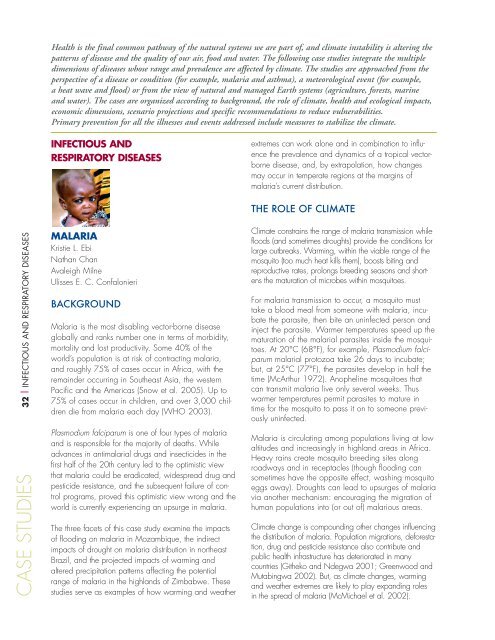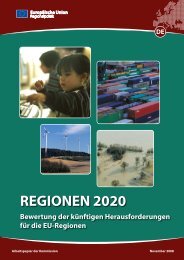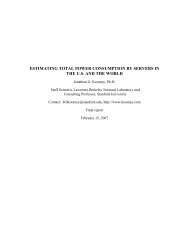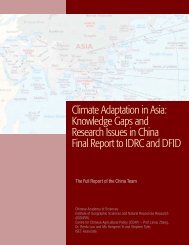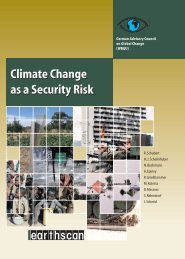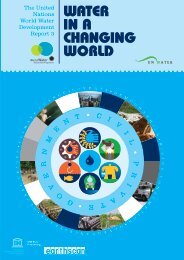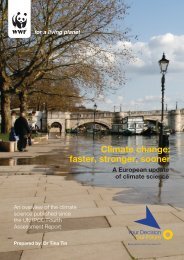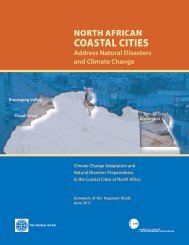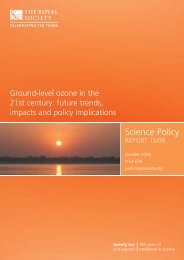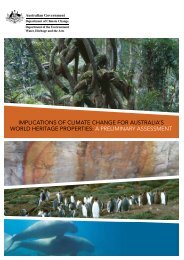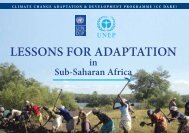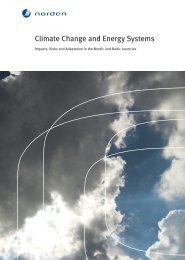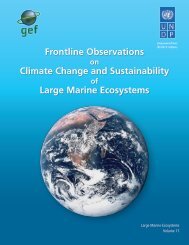Climate change futures: health, ecological and economic dimensions
Climate change futures: health, ecological and economic dimensions
Climate change futures: health, ecological and economic dimensions
Create successful ePaper yourself
Turn your PDF publications into a flip-book with our unique Google optimized e-Paper software.
Health is the final common pathway of the natural systems we are part of, <strong>and</strong> climate instability is altering thepatterns of disease <strong>and</strong> the quality of our air, food <strong>and</strong> water. The following case studies integrate the multiple<strong>dimensions</strong> of diseases whose range <strong>and</strong> prevalence are affected by climate. The studies are approached from theperspective of a disease or condition (for example, malaria <strong>and</strong> asthma), a meteorological event (for example,a heat wave <strong>and</strong> flood) or from the view of natural <strong>and</strong> managed Earth systems (agriculture, forests, marine<strong>and</strong> water). The cases are organized according to background, the role of climate, <strong>health</strong> <strong>and</strong> <strong>ecological</strong> impacts,<strong>economic</strong> <strong>dimensions</strong>, scenario projections <strong>and</strong> specific recommendations to reduce vulnerabilities.Primary prevention for all the illnesses <strong>and</strong> events addressed include measures to stabilize the climate.INFECTIOUS ANDRESPIRATORY DISEASESextremes can work alone <strong>and</strong> in combination to influencethe prevalence <strong>and</strong> dynamics of a tropical vectorbornedisease, <strong>and</strong>, by extrapolation, how <strong>change</strong>smay occur in temperate regions at the margins ofmalaria’s current distribution.THE ROLE OF CLIMATE32 | INFECTIOUS AND RESPIRATORY DISEASESCASE STUDIESMALARIAKristie L. EbiNathan ChanAvaleigh MilneUlisses E. C. ConfalonieriBACKGROUNDMalaria is the most disabling vector-borne diseaseglobally <strong>and</strong> ranks number one in terms of morbidity,mortality <strong>and</strong> lost productivity. Some 40% of theworld’s population is at risk of contracting malaria,<strong>and</strong> roughly 75% of cases occur in Africa, with theremainder occurring in Southeast Asia, the westernPacific <strong>and</strong> the Americas (Snow et al. 2005). Up to75% of cases occur in children, <strong>and</strong> over 3,000 childrendie from malaria each day (WHO 2003).Plasmodium falciparum is one of four types of malaria<strong>and</strong> is responsible for the majority of deaths. Whileadvances in antimalarial drugs <strong>and</strong> insecticides in thefirst half of the 20th century led to the optimistic viewthat malaria could be eradicated, widespread drug <strong>and</strong>pesticide resistance, <strong>and</strong> the subsequent failure of controlprograms, proved this optimistic view wrong <strong>and</strong> theworld is currently experiencing an upsurge in malaria.The three facets of this case study examine the impactsof flooding on malaria in Mozambique, the indirectimpacts of drought on malaria distribution in northeastBrazil, <strong>and</strong> the projected impacts of warming <strong>and</strong>altered precipitation patterns affecting the potentialrange of malaria in the highl<strong>and</strong>s of Zimbabwe. Thesestudies serve as examples of how warming <strong>and</strong> weather<strong>Climate</strong> constrains the range of malaria transmission whilefloods (<strong>and</strong> sometimes droughts) provide the conditions forlarge outbreaks. Warming, within the viable range of themosquito (too much heat kills them), boosts biting <strong>and</strong>reproductive rates, prolongs breeding seasons <strong>and</strong> shortensthe maturation of microbes within mosquitoes.For malaria transmission to occur, a mosquito musttake a blood meal from someone with malaria, incubatethe parasite, then bite an uninfected person <strong>and</strong>inject the parasite. Warmer temperatures speed up thematuration of the malarial parasites inside the mosquitoes.At 20°C (68°F), for example, Plasmodium falciparummalarial protozoa take 26 days to incubate;but, at 25°C (77°F), the parasites develop in half thetime (McArthur 1972). Anopheline mosquitoes thatcan transmit malaria live only several weeks. Thuswarmer temperatures permit parasites to mature intime for the mosquito to pass it on to someone previouslyuninfected.Malaria is circulating among populations living at lowaltitudes <strong>and</strong> increasingly in highl<strong>and</strong> areas in Africa.Heavy rains create mosquito breeding sites alongroadways <strong>and</strong> in receptacles (though flooding cansometimes have the opposite effect, washing mosquitoeggs away). Droughts can lead to upsurges of malariavia another mechanism: encouraging the migration ofhuman populations into (or out of) malarious areas.<strong>Climate</strong> <strong>change</strong> is compounding other <strong>change</strong>s influencingthe distribution of malaria. Population migrations, deforestation,drug <strong>and</strong> pesticide resistance also contribute <strong>and</strong>public <strong>health</strong> infrastructure has deteriorated in manycountries (Githeko <strong>and</strong> Ndegwa 2001; Greenwood <strong>and</strong>Mutabingwa 2002). But, as climate <strong>change</strong>s, warming<strong>and</strong> weather extremes are likely to play exp<strong>and</strong>ing rolesin the spread of malaria (McMichael et al. 2002).


